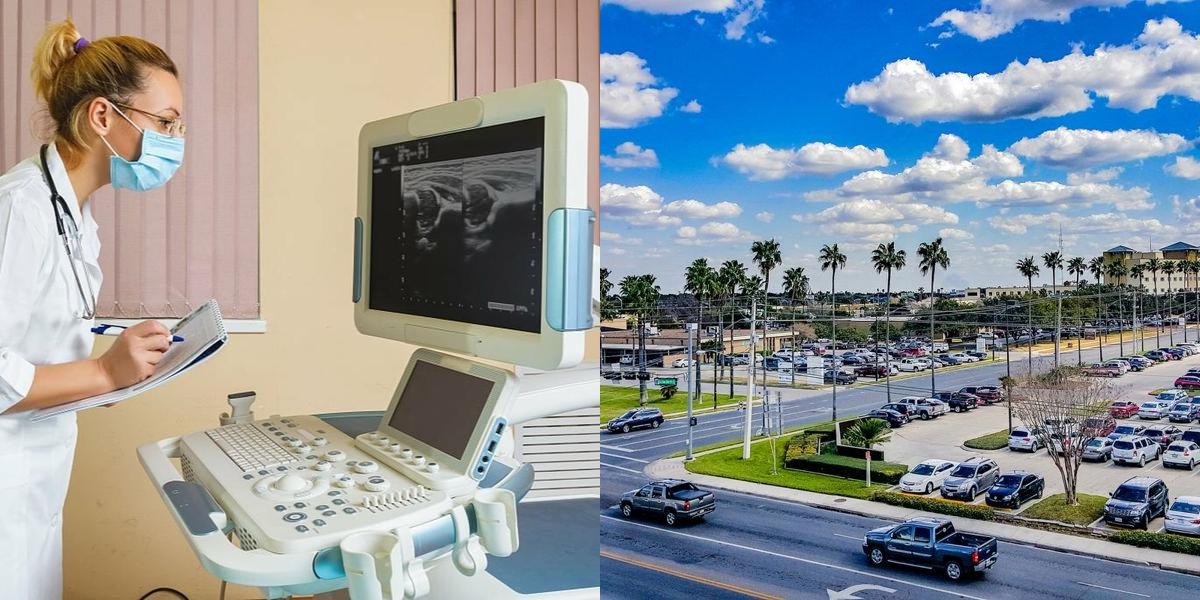How to Become a Medical Sonographer in Texas

To become a medical sonographer in Texas, you’ll need to complete an accredited diagnostic medical sonography program, earn ARDMS certification, and meet employer requirements for clinical training and patient care.
According to the Bureau of Labor Statistics (BLS), diagnostic medical sonographers in Texas earn an average of $85,030 per year ($40.88 per hour).
Employment for this field is expected to grow 13 % from 2024 to 2034, much faster than average (BLS job outlook).
Dreambound helps you find accredited diagnostic medical sonography programs in Texas so you can start your healthcare career with confidence.
How Long Does It Take to Become a Medical Sonographer?
Most sonography programs in Texas take about 18–24 months to complete, depending on program type and schedule.
Some schools offer accelerated or hybrid options that allow you to finish sooner.
Diagnostic Medical Sonography Programs in Texas
Accredited diagnostic medical sonography programs in Texas combine classroom learning with hands-on clinical experience.
Dreambound lists accredited programs you can explore by city:
- Diagnostic Medical Sonography classes near me in Austin
- Diagnostic Medical Sonography classes near me in Dallas/Fort Worth
- Diagnostic Medical Sonography classes near me in El Paso
- Diagnostic Medical Sonography classes near me in McAllen
- Diagnostic Medical Sonography classes near me in San Antonio
Browse accredited medical sonography programs in Texas on Dreambound and choose the location that fits your career goals.
Certification and Licensing Requirements in Texas
Texas does not require a state license for diagnostic medical sonographers, but most employers expect:
- Graduation from an accredited program
- Passing the ARDMS certification exam
- Active BLS certification
Staying current with certifications ensures continued employability and career growth.
Job Outlook for Medical Sonographers in Texas
According to the BLS, employment for medical sonographers is projected to grow 13 % from 2024 to 2034, much faster than average.
This growth is driven by advances in imaging technology and increasing demand for non-invasive diagnostic procedures across Texas.
Frequently Asked Questions
How long does it take to be a sonographer in Texas?
It usually takes 18–24 months to complete an accredited diagnostic medical sonography program and earn ARDMS certification.
What do you need to be a sonographer in Texas?
You need a high school diploma or GED, completion of an accredited sonography program, and ARDMS certification.
What is the quickest way to become a sonographer?
Enroll in a certificate program in diagnostic medical sonography, which takes about 12–18 months and prepares you directly for the ARDMS exam.
How much are sonographers paid in Texas?
According to the BLS, sonographers in Texas earn an average of $85,030 per year ($40.88 per hour).
Final Thoughts
Becoming a medical sonographer in Texas typically takes around two years and leads to a high-paying, in-demand career in diagnostic imaging.
With proper training and ARDMS certification, you can build a secure future in healthcare.
Compare accredited diagnostic medical sonography programs in Texas on Dreambound and take your next step toward a rewarding career today.
Related Guides

Athena is Co-founder and CEO of Dreambound.



